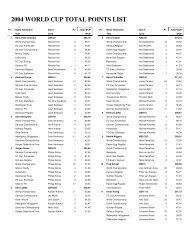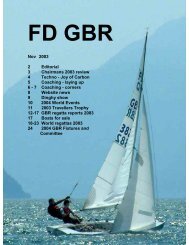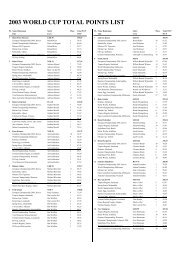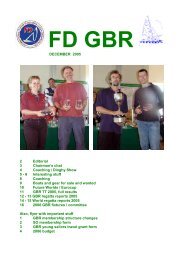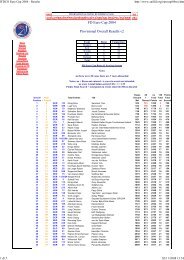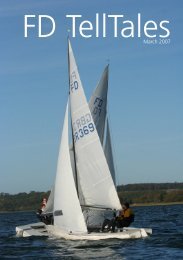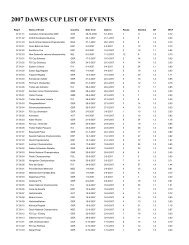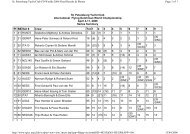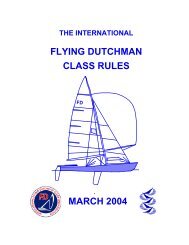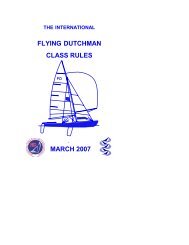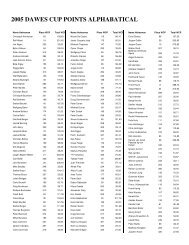MARCH 2010 - International Flying Dutchman Class
MARCH 2010 - International Flying Dutchman Class
MARCH 2010 - International Flying Dutchman Class
You also want an ePaper? Increase the reach of your titles
YUMPU automatically turns print PDFs into web optimized ePapers that Google loves.
INTERNATIONAL FLYING DUTCHMAN CLASS RULES <strong>2010</strong> 16<br />
80. Sails<br />
The dimensions given on the sail plan are maximum, except the measurement<br />
giving the position of the top batten (minimum dimension). Sails must be of woven<br />
ply (Mylar or Kevlar are prohibited, see Rule 112.).<br />
81. All sails must be single woven ply. The body of the mainsail and the genoa<br />
must each be of a single colour except for sail windows, and markings in<br />
accordance with ISAF RR 77 and Appendix G. Reinforcements are permitted<br />
without limitation but it must be possible to fold the sail, including reinforcements, by<br />
hand in any direction within an outside diameter of 8.0 mm.<br />
82. Double luff sails are prohibited.<br />
83. Sail openings, except eyelets, cringles and windows, are prohibited. Windows<br />
made of any material and with a total area that must not exceed a maximum of 1.00<br />
m 2 in each sail are permitted, but only in the mainsail and in the Jib/Genoa.<br />
(number 84 is not used)<br />
85. Emblems - Sail Letters – Numbers<br />
The class emblem shall be the letters FD. The sail number, letters and class emblem<br />
must be placed in accordance with the ISAF RRS Appendix G. In addition to ISAF<br />
Appendix G1.1 (b) mainsails and spinnakers must carry national letters in home<br />
waters. Contrary to ISAF RRS Appendix G1.3(e) national letters and sail numbers<br />
are not required on genoas.<br />
86. After a sail has passed measurement, the measurer shall stamp and sign the<br />
sail.<br />
Jib/Genoa (Note Rules 37 and 38 repeated for convenience)<br />
37. The bearing point of the jib sheet on its fairlead must be forward of a plane<br />
perpendicular to the deckline and 2000 mm along the deckline from the transom. It<br />
must be impossible to fix the bearing point of the jib sheet on its fairlead, or to<br />
extend the operational clew cringle of the jib, aft of this plane. The bearing point of<br />
the jib sheet on its fairlead must not exceed a maximum of 60 mm from the upper<br />
side of the deck. The bearing point of the jib sheet is the after most point of the<br />
bottom of the groove of a sheave, or the forward side of the opening of a fairlead for<br />
the jib sheet. (See diagram)<br />
38. When the boat is fully rigged with sails hoisted in racing trim and sheeted for<br />
windward sailing, no part of the jib must project forward of or above an imaginary<br />
line, drawn from a point on the deck line 5450 mm from the aft side of the transom to<br />
a point on the mast below the lower edge of Limit mark (band) number 4, with a<br />
tolerance forward of 5 mm. (See diagram)<br />
(numbers 87-89 no longer used)<br />
90. RRS 50.4 shall not apply<br />
91. Elastic strips and regulating cords in or attached to the foot of the jib or genoa<br />
are prohibited.



